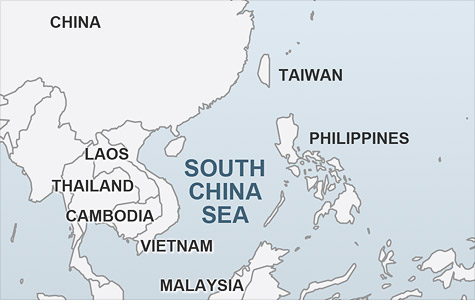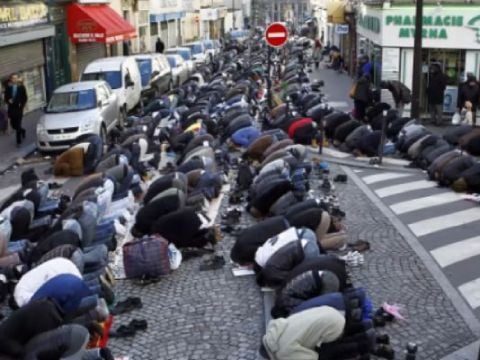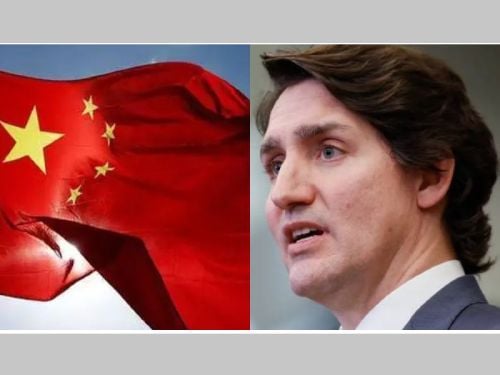 Hong Kong : When the aircraft carrier John C Stennis and four other US warships sailed into the South China Sea last week for what were described as routine exercises, the message was clear: the United States is the dominant military power in the region and plans to keep it that way.
Hong Kong : When the aircraft carrier John C Stennis and four other US warships sailed into the South China Sea last week for what were described as routine exercises, the message was clear: the United States is the dominant military power in the region and plans to keep it that way.
But numerous Chinese naval ships were operating nearby, the US navy said, noticeably more than in past years. A Chinese officer told the state-run news media that the ships were there to “monitor, identify, follow and expel” foreign vessels and aircraft, depending on how close they came “to our islands.”
The encounter, which passed without incident, was the latest episode in a wary stand-off between the United States and China over two contested island chains known as the Paracels and the Spratlys.
Since taking office three years ago, President Xi Jinping has used the isles to expand China’s military footprint in the region, taking one step after another to build and equip outposts far from the Chinese mainland over protests from its neighbors and from Washington.
The scale of the multibillion-dollar effort has raised tensions in the region and strengthened China’s disputed claim to the entirety of the South China Sea, home to some of the world’s busiest shipping lanes.
The build-up has also challenged the military status quo in the Western Pacific since the end of World War II, bringing China closer to its goal of establishing a security buffer extending far from its coast — a dream of Chinese strategists since the Korean War.
“China wants a bathtub,” said Marc Lanteigne, a senior research fellow at the Norwegian Institute of International Affairs who studies Chinese foreign policy, drawing a comparison with US dominance in the Caribbean. “China wants waters that are theirs, that they can operate military and police vessels in, without having to worry about the presence of the US or the Philippines or Vietnamese or Indian naval forces.”
The build-up has proceeded incrementally but remarkably swiftly given that China and its neighbors have been locked in a stalemate over the islands that has simmered for decades. Dredging of sand to build artificial islands atop coral reefs in the Spratlys began as early as 2014 but accelerated last year, and the isles now feature deepwater harbors and long runways suitable for warships and fighter jets.
Then surface-to-air missile batteries appeared last month in the Paracels, more than 300 miles to the north. Now satellite photos show what seem to be powerful radar facilities, potentially extending the kill zone of missiles on the Chinese mainland that are devised to sink aircraft carriers.
The new fortifications pose little threat to the US military, which could easily destroy them in a conflict.
But US officials are increasingly worried that the build-up, if unchecked, will give China de facto control of an expanse of sea the size of Mexico and military superiority over neighbors with competing claims to the waters. That, some say, could prompt a regional arms race and increase the risk of conflict.
While officials in Washington say China is nowhere near gaining the capacity to keep US forces out of the South China Sea, analysts say the build-up will make it more difficult for the US navy to quickly defend allies with weaker militaries, like the Philippines. The deployment of fighter jets, anti-ship missiles and more powerful radar in particular could embolden the Chinese Navy while giving US commanders pause, they said.
Testifying before the Senate Armed Services Committee last month, Admiral Harry B Harris Jr, commander of the United States Pacific Command, warned that China’s actions were “changing the operational landscape in the South China Sea.” And in written answers submitted to the committee, the Obama administration’s top intelligence official, James R Clapper, forecast that China would “have significant capacity to quickly project substantial military power to the region” by early next year.

Although China has not finished construction, he wrote, it can already deploy fighter aircraft, surface-to-air missiles, coastal defense cruise missiles as well as large warships and sizable Coast Guard vessels to the new artificial islands in the Spratlys.
Clapper also confirmed that military radar had been installed more than 600 miles from the Chinese island province of Hainan on Cuarteron Reef, the southernmost of the seven artificial islets. In theory, that could improve the ability of China’s so-called carrier-killer missile, the DF-21D, to strike faraway targets and complicate US navy efforts to develop countermeasures against it.
Last month, Vietnam lodged a formal protest after satellite photos indicated that China had deployed HQ-9 surface-to-air missile batteries on the largest island in the Paracels, Woody Island. Vietnam claims both the Paracels and the Spratlys, and nationalist sentiment has been running high since the appearance of a Chinese oil drilling platform near the Paracels led to anti-Chinese demonstrations and riots two years ago.
China’s build-up in the Spratlys has also angered the Philippines. Chinese forces wrested control of Scarborough Shoal in the Spratlys from the Philippines after an extended stand-off four years ago, a move that President Benigno S Aquino III later compared to Nazi Germany’s annexation of Czechoslovakia.
Senator John McCain, the Republican chairman of the Senate Armed Services Committee, warned recently that China seemed poised to expel Philippine forces from another outpost and urged the Obama administration to clarify how it would respond. Last month, Chinese vessels drew protests by blocking Philippine fishing boats from reaching a disputed atoll.
Analysts said the build-up had made it easier for Chinese ships to operate for long periods in the Spratlys without returning to the Chinese mainland.
“Now Chinese ships can stay out in the Spratlys whenever they want, pretty confidently,” said Gregory B Poling, director of the Asia Maritime Transparency Initiative at the Center for Strategic and International Studies in Washington.
Poling said the new radar installations on Cuarteron Reef could give China the ability to see over the horizon and perhaps track targets as far away as the vital Malacca Strait hundreds of miles to the southwest.
At his summit meeting with President Barack Obama in September, Xi pledged not to “pursue militarization” of the Spratlys, but he did not include the Paracels, and Beijing has since insisted that it is entitled to “limited defensive facilities” across the South China Sea, comparing them to United States bases in Hawaii.
Chinese analysts argue that the build-up preserves peace by deterring others with territorial claims to the sea, including Brunei, Indonesia, Malaysia and Taiwan. “The main reason for the construction is to tell other countries to stop their provocations, because if they continue to push, we have the capability to push back,” said Xu Liping, a researcher at the Chinese Academy of Social Sciences.
US officials said they expected China to build large fuel storage tanks on the islands next, which would allow its fighter jets to remain in the region longer, and then to declare an “air defense identification zone” over the South China Sea as it did for a contested part of the East China Sea in late 2013.
China claimed the right to require aircraft entering the zone to identify themselves and to take military action against those that did not follow orders. Japan and the United States refused to recognize the claim or cooperate.
The Obama administration has struggled, however, to come up with a policy to slow or stop what it has called China’s militarization of the South China Sea.
A senior defense official, who requested anonymity to speak more freely about US policy, noted that while China might be gaining in the “maritime arena,” its progress had also prompted neighbors like the Philippines and Vietnam to expand military ties with the United States.
In recent months, the Pentagon has also stepped up “freedom of navigation” patrols in the South China Sea, sending US warships and aircraft into territory claimed by Beijing to assert Washington’s view that these areas remain international waters and airspace.
But China has responded by using the patrols to argue that it is the United States that is militarizing the South China Sea — and by continuing to build.
“China was the first country to discover, name, develop and manage the South China Sea islands,” the Chinese foreign minister, Wang Yi, told a news conference on Tuesday. “History will prove who is a mere guest and who is a real host.”
Source : TOI


 Pakistan: Ancient Hindu temple in Khyber Pakhtunkhwa demolished for commercial complex
Pakistan: Ancient Hindu temple in Khyber Pakhtunkhwa demolished for commercial complex Rampant violence rocks schools in France during Ramzan
Rampant violence rocks schools in France during Ramzan 2 ISIS terrorists arrested in Germany for sexual abuse of minor Yazidi children
2 ISIS terrorists arrested in Germany for sexual abuse of minor Yazidi children UK: Over 50 children were sexually abused by paedophile catholic monks for decades
UK: Over 50 children were sexually abused by paedophile catholic monks for decades China, not India, interfered in 2019 and 2021 Canada elections, says Canadian panel
China, not India, interfered in 2019 and 2021 Canada elections, says Canadian panel Ghana: 63-year-old Christian priest’s marriage to a 12-year-old girl sparks outrage
Ghana: 63-year-old Christian priest’s marriage to a 12-year-old girl sparks outrage